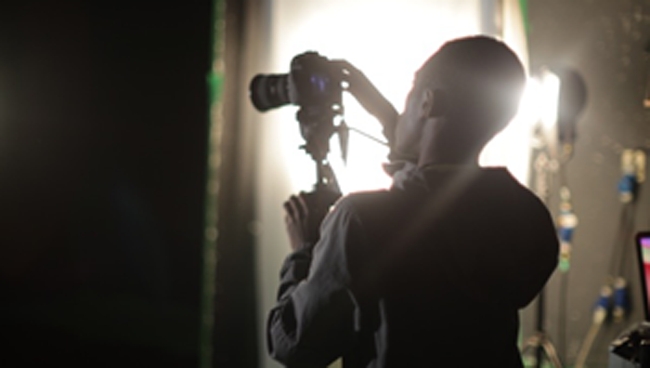There has been an explosion with the arts in this digital age; the tools of creative types are growing in sophistication and allowing greater freedom.
Currently the most watched YouTube video of all time is a music video (the infamous Gangnam Style).
In response to the sheer volume of new musical content being released every day, directors are working hard to make their work stand out, be it by expanding the scope of current filming techniques and themes, or reworking classic ideas.
Equipment is slowly becoming more affordable...
...for amateurs, up and coming talent and established video makers alike. Even camera phones are being used to shoot music videos in small spaces or previously inaccessible angles, with rapidly improving resolution and frame rates.
Like phones, newer small HD camcorders have popularised POV shots, helmet-cam and monopole shots (affectionately dubbed GoPro angles) that look more professional than perhaps the pocket cameras employed by skateboard videographers 20 years ago.
Sliders are more affordable than bulky track and dolly setups, giving rise to more and more interesting, smooth tracking shots in tight spaces for music videos and commercials.
We have long ‘fetishised’ the past;
It’s the juxtaposition of modern technology and the nostalgic look of vintage film that really creates spectacle. In the last few years hip hop/RnB videos have used black and white footage but with modern, sharp definition creating a slick and powerful high-contrast image, one of the most effective being Beyonce's Single Ladies. Rock acts are beginning to adopt the trend on a similar scale- notably Kasabian in 'Underdog', 'Days are Forgotten', 'Club Foot' and newly released 'Ezz Eh'.
In a similar vein; some music videos are trying harder to emulate the look of traditional colour film. There is something a bit clinical and unsettling about imagery that is too sharp. Shallow depth of field harks back to the cinematic film look we are used to, as well as drawing the viewer's eye to a specific object in focus. Reducing the contrast, adding texture or “mattifying” the footage and also letterboxing are other frequently used methods of achieving the popular film look, exemplified by directors such as Kristof Brandl (‘Pop Le Cheval’) and Jake Scott (‘Cheating’).
A slightly more extreme example is the style adopted in some of Ellie Goulding (‘Your Song’ Dirs. Ben Coughlan & Max Knight) and the vast majority of Lana Del Rey's music videos (‘Summertime Sadness’ Dirs. Kyle Newman & Spencer Susser). Heavy use of focus pulling and over-saturated images could almost make you think you were watching a 1960's home video. It creates a sense of nostalgia, intimacy and oddly attractive naivety on the part of an amateur supposedly holding the shaky camera. Lana's videos are cohesive with her yesteryear fantasy - the realm of Brigitte Bardot and Nancy Sinatra - and they have proved wildly popular. What helps make it work is that modern editing can add noise, vignettes, flicker and other strategically placed imperfections.
The latest trend has to be the lyric video.
Arguably it could be said that the first popular lyric video was created all the way back in 1965 with 'Subterranean Homesick Blues'. The modern comeback is influenced by the kinetic typography art form, popularised by Saul Bass' work in movie title sequences. Lyric videos are inexpensive and don't take long to produce, so can be used to promote new material much faster than a conventional video which my come later down the line. Such videos also give audiences something to sing along to, though that same audience faces alienation as their “tradition” of fan-made lyric videos are ousted in favour of the likes on Vevo, for whom viewership is monetized.
Music video production continues to evolve as exponentially as our social networks and technology. Our habit of sharing content has given rise to ideas like interactive music videos or collaborative projects including contributions from all over the world. We now have the world's first 24 hour long music video thanks to Pharrell Williams and even a cover of Bowie's 'Space Oddity' actually shot on location and beamed back down to Earth.
The best possible trends we can look forward to for the rest of 2014 are not just seeing how many ways we can reimagine the past, but seeing how much further we can push the boundaries in the future.
Written by: Eboni Patterson
08/05/2014


